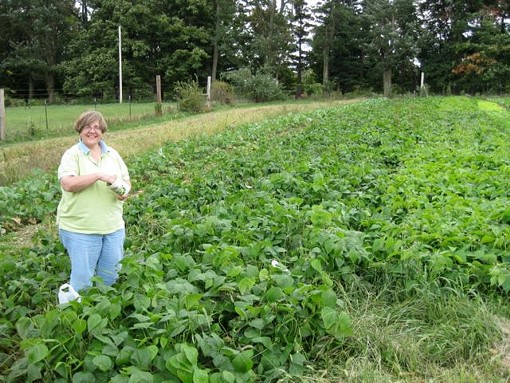Unless you're a gardener, you might not be aware that many people who grow stuff have already started seedlings or, at the very least, put in their seed orders for this year's backyard crop.
If you never even got around to yanking last fall's desiccated tomato plants from the frozen tundra, raise your hand.
Regardless of your level of devotion, you might be interested in a method of acquiring fruits and vegetables that doesn't involve muddy knees or thieving birds, squirrels and rabbits.
Now is the time to secure your CSA share for the spring.
CSAs -- the abbreviation stands for community-sponsored agriculture -- appear to be on the rebound in the St. Louis area, and for people in search of good, fresh food, that's encouraging news. Investing in a CSA essentially involves extending a short-term loan directly to a farmer. When the crops come in, shareholders recoup their investment in edible form.
And the harvest is plentiful.
A wide range of vegetables is relatively standard across the region thanks to the magic of climate patterns. Early season always brings mind-boggling amounts of lettuce and greens, summer yields lots of cucumbers, summer squash and zucchini, tomatoes, eggplant, beans and peppers, and the fall bounty includes potatoes, squashes and greens again. You'll have to learn what to do with turnips, and it helps to be open to less-common crops -- celeriac, sunchokes, kohlrabi. Fruits are not standard, but a lot of places grow watermelon, raspberries and strawberries.
After the jump: a rundown on some area CSAs.
Community Supported Garden at La Vista: Located in Godfrey, Illinois, about an hour from downtown St. Louis. La Vista shares are huge, which makes up for the drive. A good portion is allocated via the pick-your-own area; consider it as a form of weekend therapy after a rough work week. This is the exceptionally rare local share that includes flowers, a nice touch. They also offer alternate-week half-share pickups if the drive and/or the quantity volume is daunting. Each week La Vista donates any surplus to area food pantries. Cost: $535 for a full share, $300 for a half.
Three Rivers Community Farm: Started in Elsah, Illinois, by a La Vista alum, Three Rivers usually works the St. Louis farmers' market circuit. At one time this CSA delivered to various points in town, but as with La Vista, you now have to schlep it yourself. (There's also a pick-your-own option.) Cost: $500.
Yellow Wood Farms: This Kirkwood farm grows a wide variety of crops and are adept at advance planning in order to hoard some produce for distribution during the winter. They offer a number of pickup sites around St. Louis County, and even home drop-off (which seems like the most luxurious setup ever). Cost: $595 for a full share, $395 for a half.
Fair Shares Combined CSA: The mack daddy of area CSAs, Fair Shares pulls together a wide variety of local producers for a more boutique-y share experience. Vegetables are supplemented with meats, eggs, bread, pasta, cheese and a rotating roster of prepared foods. It's not cheap, but it is a good way to learn about what is available in the area. A waiting list is not uncommon, but it seems to move quickly. (Disclosure: I'm a member, and have been for a season and a half.) Cost: $50 plus tax per week (46 weeks).
Tuv Ha'Aretz: This is a nationally affiliated CSA that operates through the Jewish Community Center in west county. Cost: $618 for JCC members, $636 for nonmembers.
A few words to the wise: Farmers are subject to the vicissitudes of Mother Nature, and so are CSA shareholders. Investors essentially throw in their lot with the grower. If the growing season is too rainy or too dry, or if the farm is awesomely productive, shareholders assume part of the burden or benefit from the bounty. The farmer receives a cash infusion when it's most needed: at the beginning of the year. This translates to a bigger investor outlay up front, but it tends to amortize out over the course of the season, which typically runs from May to late October.


